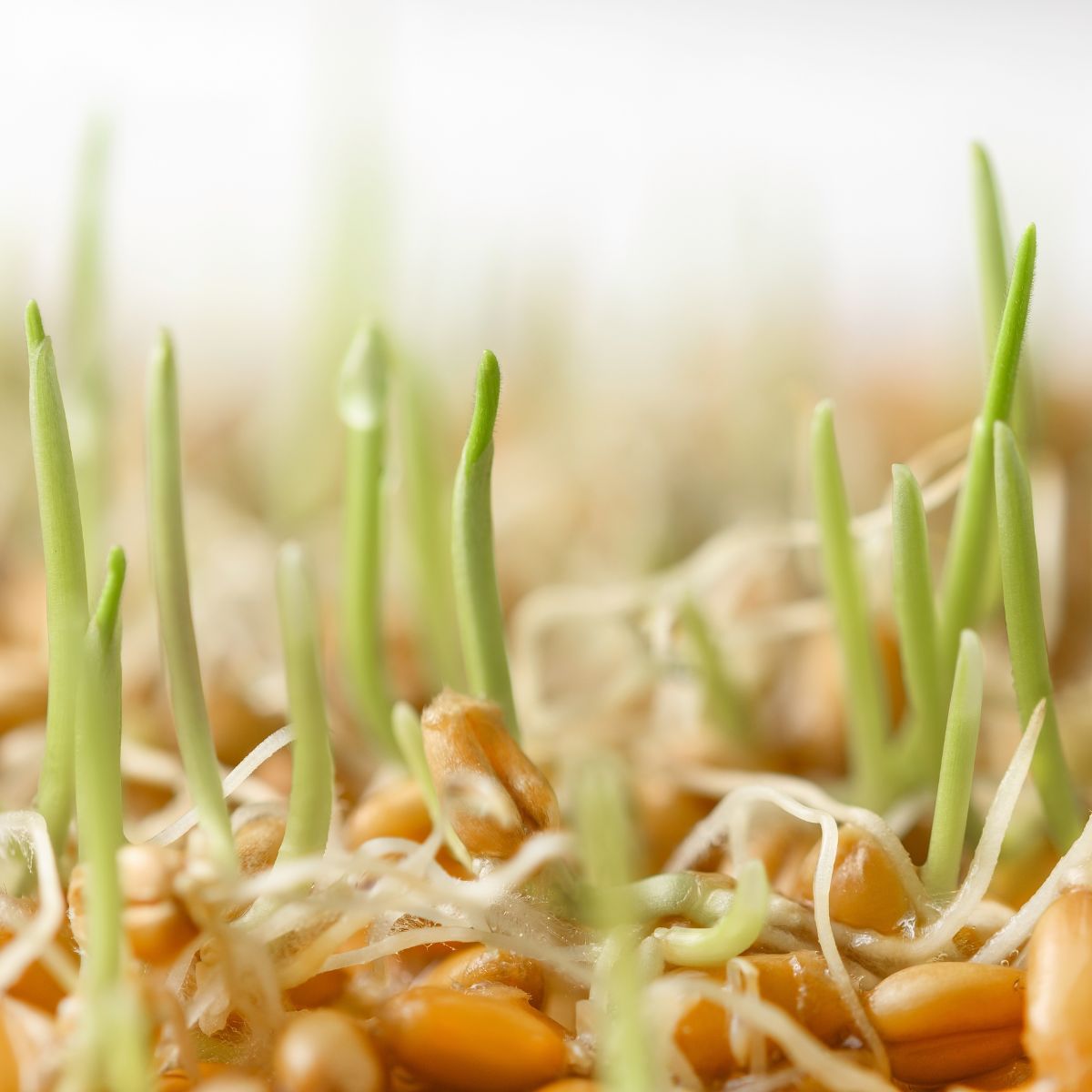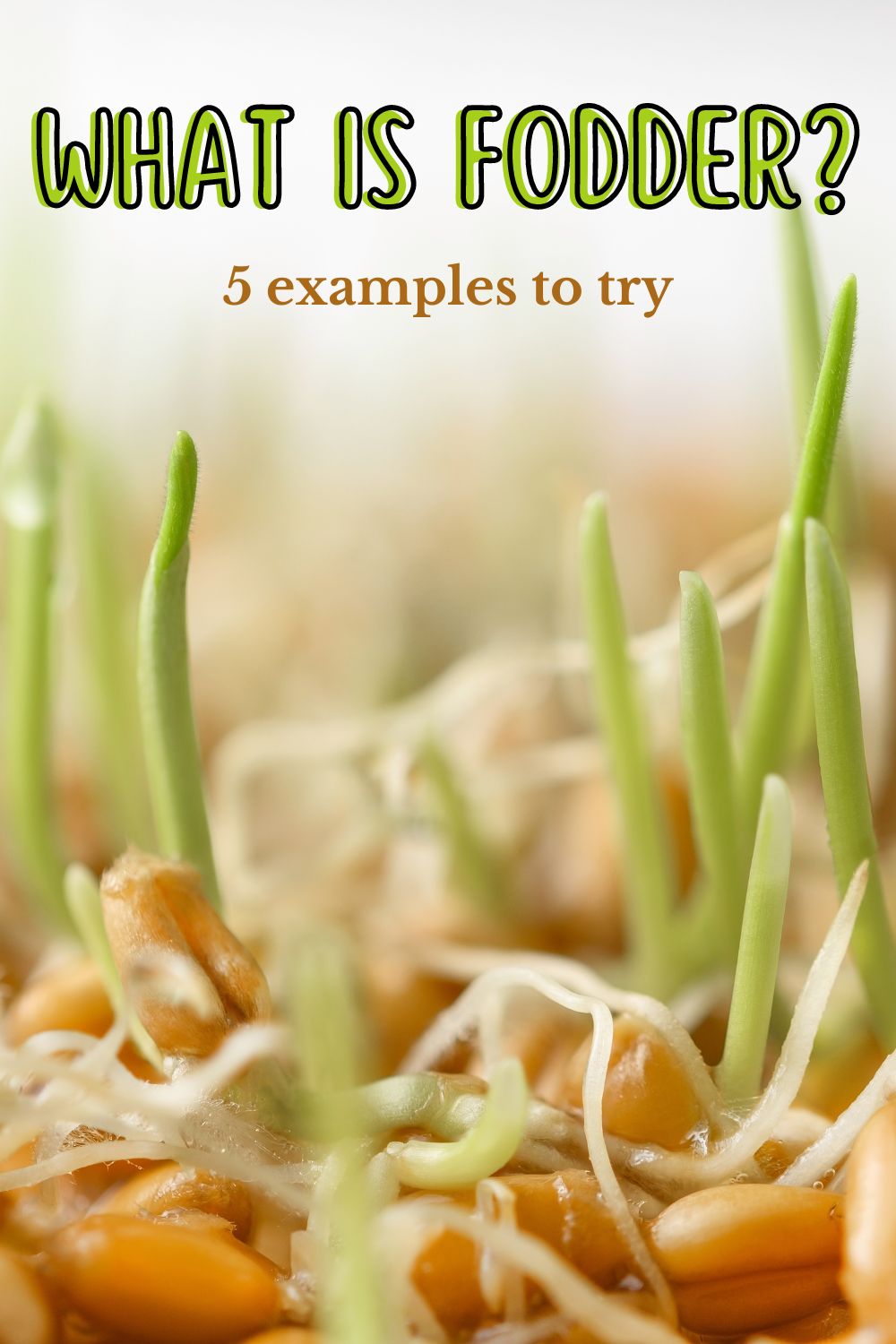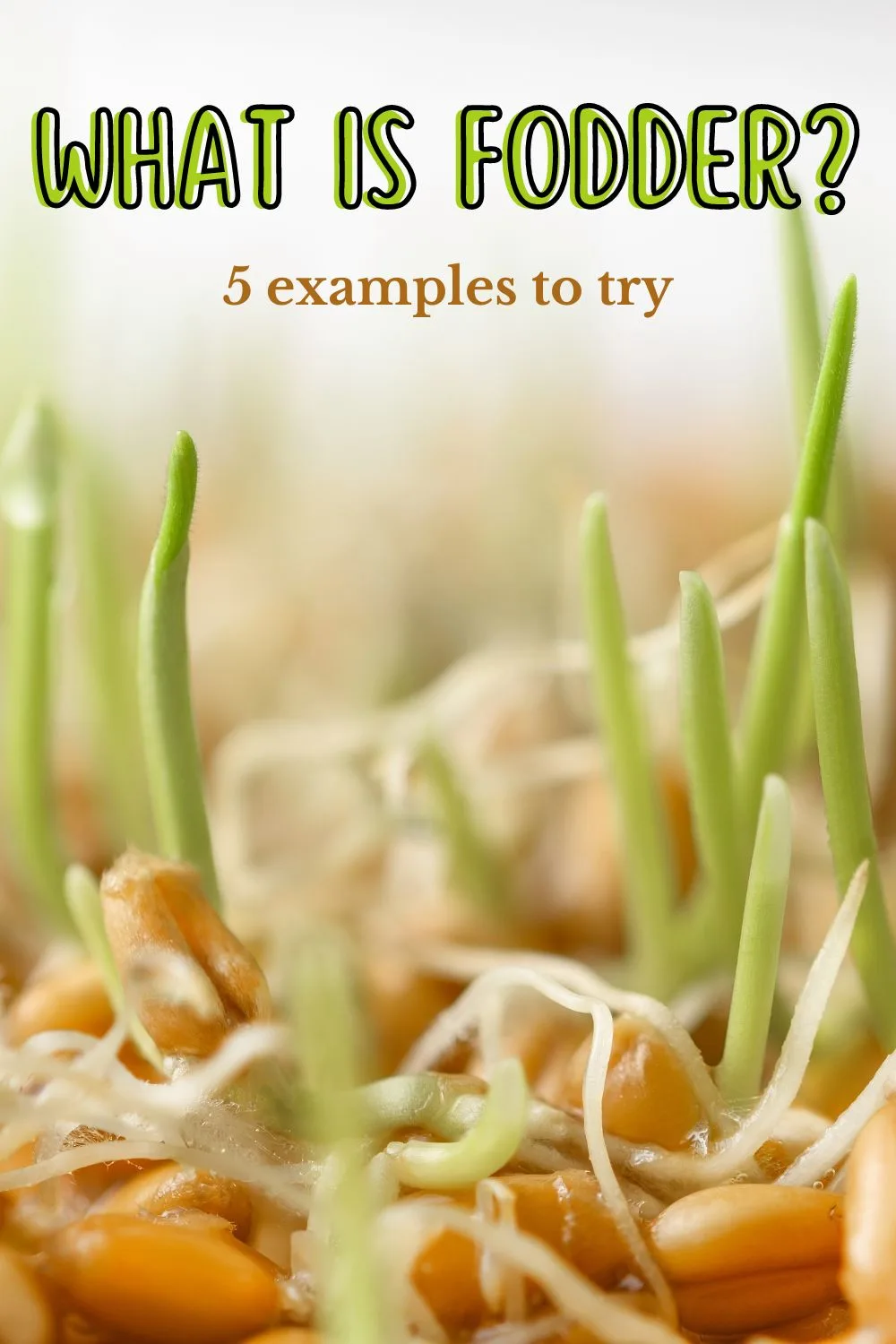What’s fodder? Normally, fodder is made from sprouted grains used as animal feed by small ranchers, interest farms, and homesteaders.


You need to use many sorts of fodder to feed your animals, together with hay, straw, silage, compressed and pelleted feeds, oils and combined rations, and sprouted grains and legumes (reminiscent of bean sprouts or malt).;
Individuals who desire hydroponic fodder (sprouted grain) say it carries dietary advantages unavailable in un-sprouted grains, harvested hay, and recent pasture grass.


So, hydroponic fodder programs take advantage of sense for natural and grass-fed livestock operations, smaller household farms, interest operations, and horse stables. It may be a major feeding choice when pastureland and hay are in brief provide and can add a extremely nutritious and scrumptious complement to conventional grazing.
Attention-grabbing reality: Though merchandise reminiscent of barley seed technically are grain, when sprouted grains are fed to cattle, they qualify as “Grassfed Beef” by the American Grassfed Affiliation.
In conclusion, hydroponic fodder programs don’t look like an economically possible choice for large-scale livestock farms which have already got loads of constantly productive pasture and entry to top quality, moderately priced hay
Giant-scale cattle ranches or thoroughbred farms often have 1000’s of acres to feed their livestock. However the medium and small-sized rancher could also be cramped for sufficient house (acreage) to graze their inventory. These of us want an excellent fodder resolution.
In keeping with the USDA, it takes 1-1/2 to 2 acres of high-quality pasture grass per cow or horse. And within the winter, when the grass stops rising (even in Florida and Southern California), you could purchase hay and grain to maintain your livestock fed.
Moreover, many skilled livestock homeowners say that is the naked minimal and that 3 or extra acres per animal can be significantly better. All that land should be seeded, fertilized, and watered. Wow! That’s a variety of costly land, exhausting work, and expense to maintain these animals fed!
Additionally, processed fodder reminiscent of hay, silage, chaff, and grains are costly and liable to spoilage.
Is there a solution to this downside? A neater, cheaper, extra nutritious method to feed a small to medium livestock herd in your interest farm or homestead? A viable, inexpensive fodder resolution?
Yep, there’s! The hydroponic course of (utilizing the Nutrient Movie Approach, or NFT) has confirmed to be a incredible resolution for rising numerous extremely nutritious fodder in a really small house. Hydroponic programs are the proper fodder resolution!
Hydroponic programs have been developed lately, permitting tons of sprouts to be produced year-round every day. This has supplied a novel, inexpensive fodder resolution for 1000’s of ranchers.
Sprouted grains can considerably improve the dietary worth of the grain in contrast with feeding the ungerminated seeds. As well as, they use much less water than conventional forage, making them ideally suited for drought circumstances. Sprouted barley and different cereal grains might be grown hydroponically in a rigorously managed hydroponic atmosphere.
In solely 7 days, you’ll produce sprouted fodder at about 6″ tall with a 2″ root mat, the height dimension for feeding livestock. The animals eat each the sprouts and the foundation mat with apparent relish.


You’ll want seeds or grains appropriate for sprouting or rising into fodder. Frequent selections embrace barley, oats, wheat, alfalfa, and numerous grasses.
Ample water provide is essential for rising fodder. The seeds have to be soaked after which irrigated in the course of the rising course of.


Fodder is commonly grown hydroponically in trays or containers. These containers ought to permit for correct drainage and air circulation.


An acceptable rising medium, reminiscent of soil or a hydroponic substrate, is critical for the seeds to sprout and develop. Some programs use a hydroponic mat or comparable supplies.
Relying in your setup, if pure daylight is inadequate, chances are you’ll want a light-weight supply for the preliminary germination part. Be taught extra about develop lights.
Sustaining the proper temperature is essential for profitable fodder manufacturing. Seeds sometimes require a heat and humid atmosphere for germination and early progress.
Be taught extra in regards to the optimum develop room temperature.
Correct air flow helps forestall mould or fungal progress. Good air circulation is crucial to make sure the well being of the rising fodder.
When the fodder reaches the specified top, you’ll want instruments to reap it. This might be so simple as a knife or scissors, relying on the dimensions of your operation.
As soon as harvested, fodder should be saved correctly to take care of its dietary worth. Correct air flow and safety from pests are important concerns.
Some programs use a nutrient resolution to reinforce the dietary content material of the fodder. That is widespread in hydroponic or soilless programs.
Keep in mind that particular particulars might fluctuate primarily based on the kind of grains or seeds you utilize and the environmental circumstances of your location. Alter the method accordingly and search steerage from native agricultural specialists if wanted.
Above all, have enjoyable attempting new mixtures that assist your livestock keep wholesome and productive.




Stella and Simon, a few back-to-the-land, child boomer fanatics, have embraced the world of home made hydroponics on their three-acre plot of Florida piney woods. Their journey started after drawing inspiration from Epcot Middle’s hydroponics exhibit, and so they’ve delved into numerous hydroponic strategies, experimenting with totally different programs, configurations, and crops each indoors and outdoor. Their experience culminated within the creation of an progressive home made hydroponics greenhouse, documented of their guide, Simon’s Super Simple On-the-Grid, Off-the-Grid Hydroponic/Aquaponic Survival Greenhouse.
Pin To Save For Later


You need to use many sorts of fodder to feed your animals, together with hay, straw, silage, compressed and pelleted feeds, oils and combined rations, and sprouted grains and legumes (reminiscent of bean sprouts or malt).;
What’s Fodder In A Nutshell
- Hay – grass, legumes (peas, beans, and lentils), or different inexperienced vegetation which have been reduce, dried, and saved to make use of as bulk fodder for grazing animals within the winter.
- Silage – grass or different inexperienced fodder which has been reduce, compacted, and saved in hermetic buildings (silos), with out first being dried. Saved on this means, it retains excessive moisture content material and even ferments over time. Silage is used to feed ruminant (cud-chewing) animals in the course of the season when pasture grass is unavailable. (Ruminants embrace cows, sheep, and goats, however not horses or pigs). Corn silage is among the mostly processed as a result of it’s excessive in vitality and simple for the animal to digest.
- Pellets – compound manufactured feed fashioned into pellets or (cattle) cake
- Chaff – crop residues like straw, chaff, or stover. It’s eaten as fodder, however it’s not as nutritious as hay or silage
- Grain – seeds and grains, bran, maize, sorghum, “candy feed”- wealthy, extremely concentrated dietary supplements, fed in restricted quantities, usually for “fattening up” an underweight animal.
- Sprouted grains and legumes – fodder within the type of sprouted grains and legumes might be grown in small or massive portions, from just a few easy sprouting trays for the small household homestead to cutting-edge, climate-controlled hydroponic “Fodder Factories,” which may produce greater than 2 tons of high-quality, super-nutritious fodder PER DAY!
Hydroponic Fodder Rising Methods
Individuals who desire hydroponic fodder (sprouted grain) say it carries dietary advantages unavailable in un-sprouted grains, harvested hay, and recent pasture grass.


Hydroponic fodder benefits
- Superior diet and hydration
- No fertilizer, herbicides, or pesticides
- Low water consumption; ideally suited for drought areas
- Most economically possible for grass-fed milk manufacturing, organic-certified operations, areas the place ample and constant pasture manufacturing is proscribed, hay is scarce or costly, and drought-prone areas.
So, hydroponic fodder programs take advantage of sense for natural and grass-fed livestock operations, smaller household farms, interest operations, and horse stables. It may be a major feeding choice when pastureland and hay are in brief provide and can add a extremely nutritious and scrumptious complement to conventional grazing.
Attention-grabbing reality: Though merchandise reminiscent of barley seed technically are grain, when sprouted grains are fed to cattle, they qualify as “Grassfed Beef” by the American Grassfed Affiliation.
Hydroponic fodder disadvantages
- A excessive preliminary price for the system
- Labor prices to course of, keep, harvest, and feed the fodder might be substantial for giant operations.
- A typical hydroponic atmosphere should be maintained (reasonable temperatures and humidity); nonetheless, the hydroponic resolution is NOT vital: solely clear water
- Mildew potential
In conclusion, hydroponic fodder programs don’t look like an economically possible choice for large-scale livestock farms which have already got loads of constantly productive pasture and entry to top quality, moderately priced hay
Fodder Options
Giant-scale cattle ranches or thoroughbred farms often have 1000’s of acres to feed their livestock. However the medium and small-sized rancher could also be cramped for sufficient house (acreage) to graze their inventory. These of us want an excellent fodder resolution.
In keeping with the USDA, it takes 1-1/2 to 2 acres of high-quality pasture grass per cow or horse. And within the winter, when the grass stops rising (even in Florida and Southern California), you could purchase hay and grain to maintain your livestock fed.
Moreover, many skilled livestock homeowners say that is the naked minimal and that 3 or extra acres per animal can be significantly better. All that land should be seeded, fertilized, and watered. Wow! That’s a variety of costly land, exhausting work, and expense to maintain these animals fed!
Additionally, processed fodder reminiscent of hay, silage, chaff, and grains are costly and liable to spoilage.
Is there a solution to this downside? A neater, cheaper, extra nutritious method to feed a small to medium livestock herd in your interest farm or homestead? A viable, inexpensive fodder resolution?
Yep, there’s! The hydroponic course of (utilizing the Nutrient Movie Approach, or NFT) has confirmed to be a incredible resolution for rising numerous extremely nutritious fodder in a really small house. Hydroponic programs are the proper fodder resolution!
From seed to feed in 7 days!
Hydroponic programs have been developed lately, permitting tons of sprouts to be produced year-round every day. This has supplied a novel, inexpensive fodder resolution for 1000’s of ranchers.
Sprouted grains can considerably improve the dietary worth of the grain in contrast with feeding the ungerminated seeds. As well as, they use much less water than conventional forage, making them ideally suited for drought circumstances. Sprouted barley and different cereal grains might be grown hydroponically in a rigorously managed hydroponic atmosphere.
In solely 7 days, you’ll produce sprouted fodder at about 6″ tall with a 2″ root mat, the height dimension for feeding livestock. The animals eat each the sprouts and the foundation mat with apparent relish.
What You Want To Make Fodder
Seeds or grain


You’ll want seeds or grains appropriate for sprouting or rising into fodder. Frequent selections embrace barley, oats, wheat, alfalfa, and numerous grasses.
Water
Ample water provide is essential for rising fodder. The seeds have to be soaked after which irrigated in the course of the rising course of.
Fodder trays


Fodder is commonly grown hydroponically in trays or containers. These containers ought to permit for correct drainage and air circulation.
Rising medium


An acceptable rising medium, reminiscent of soil or a hydroponic substrate, is critical for the seeds to sprout and develop. Some programs use a hydroponic mat or comparable supplies.
Mild supply
Relying in your setup, if pure daylight is inadequate, chances are you’ll want a light-weight supply for the preliminary germination part. Be taught extra about develop lights.
Temperature management
Sustaining the proper temperature is essential for profitable fodder manufacturing. Seeds sometimes require a heat and humid atmosphere for germination and early progress.
Be taught extra in regards to the optimum develop room temperature.
Air flow
Correct air flow helps forestall mould or fungal progress. Good air circulation is crucial to make sure the well being of the rising fodder.
Harvesting instruments
When the fodder reaches the specified top, you’ll want instruments to reap it. This might be so simple as a knife or scissors, relying on the dimensions of your operation.
Storage
As soon as harvested, fodder should be saved correctly to take care of its dietary worth. Correct air flow and safety from pests are important concerns.
Nutrient resolution (non-compulsory)
Some programs use a nutrient resolution to reinforce the dietary content material of the fodder. That is widespread in hydroponic or soilless programs.
The right way to Make Fodder – Step By Step
- choose and measure grains/seeds
- rinse
- soak
- drain and unfold
- watch for germination
- maintain watering
- guarantee air flow
- add lighting (if wanted)
- watch for progress of 4 to six inches
- harvest
- feed livestock
Ideas
- Experiment with totally different grains and seed mixes to seek out what works greatest on your animals
- Monitor for indicators of mould or spoilage, and modify your course of accordingly
- Hold information of your fodder manufacturing to optimize your course of over time
Keep in mind that particular particulars might fluctuate primarily based on the kind of grains or seeds you utilize and the environmental circumstances of your location. Alter the method accordingly and search steerage from native agricultural specialists if wanted.
Above all, have enjoyable attempting new mixtures that assist your livestock keep wholesome and productive.




Stella and Simon, a few back-to-the-land, child boomer fanatics, have embraced the world of home made hydroponics on their three-acre plot of Florida piney woods. Their journey started after drawing inspiration from Epcot Middle’s hydroponics exhibit, and so they’ve delved into numerous hydroponic strategies, experimenting with totally different programs, configurations, and crops each indoors and outdoor. Their experience culminated within the creation of an progressive home made hydroponics greenhouse, documented of their guide, Simon’s Super Simple On-the-Grid, Off-the-Grid Hydroponic/Aquaponic Survival Greenhouse.
Pin To Save For Later
